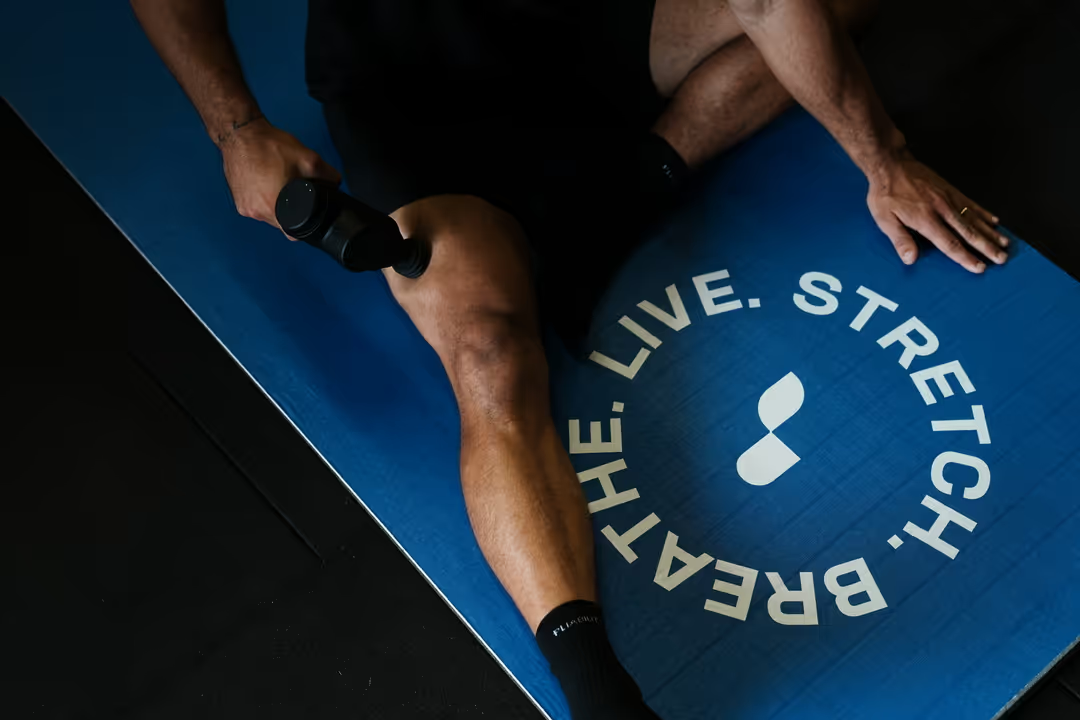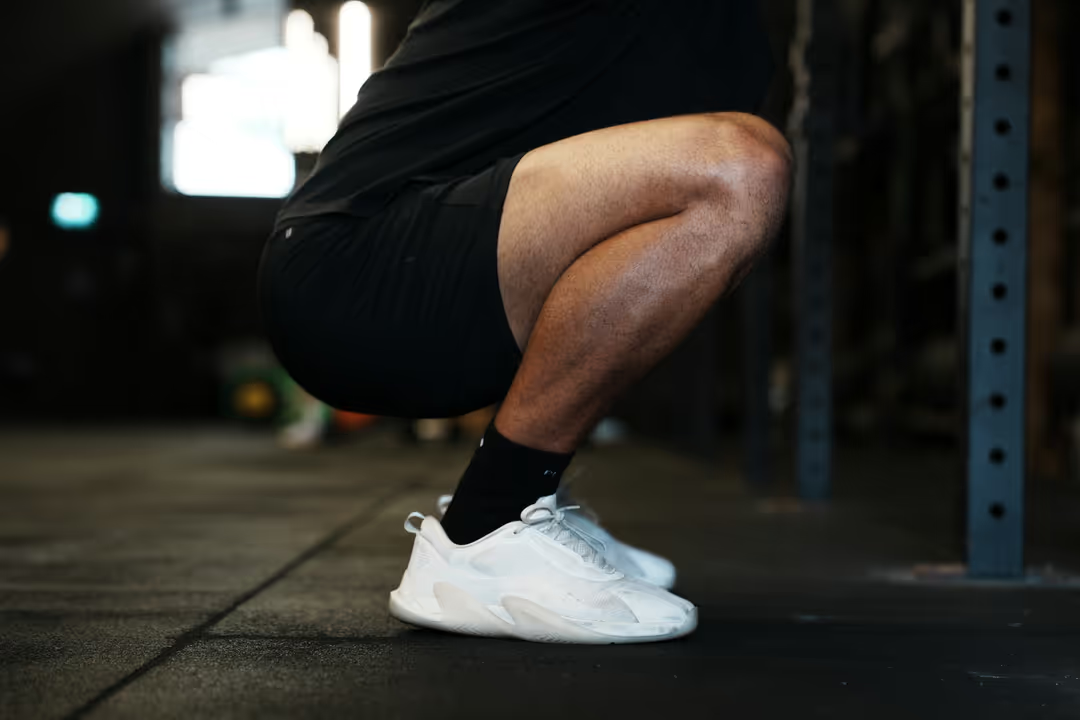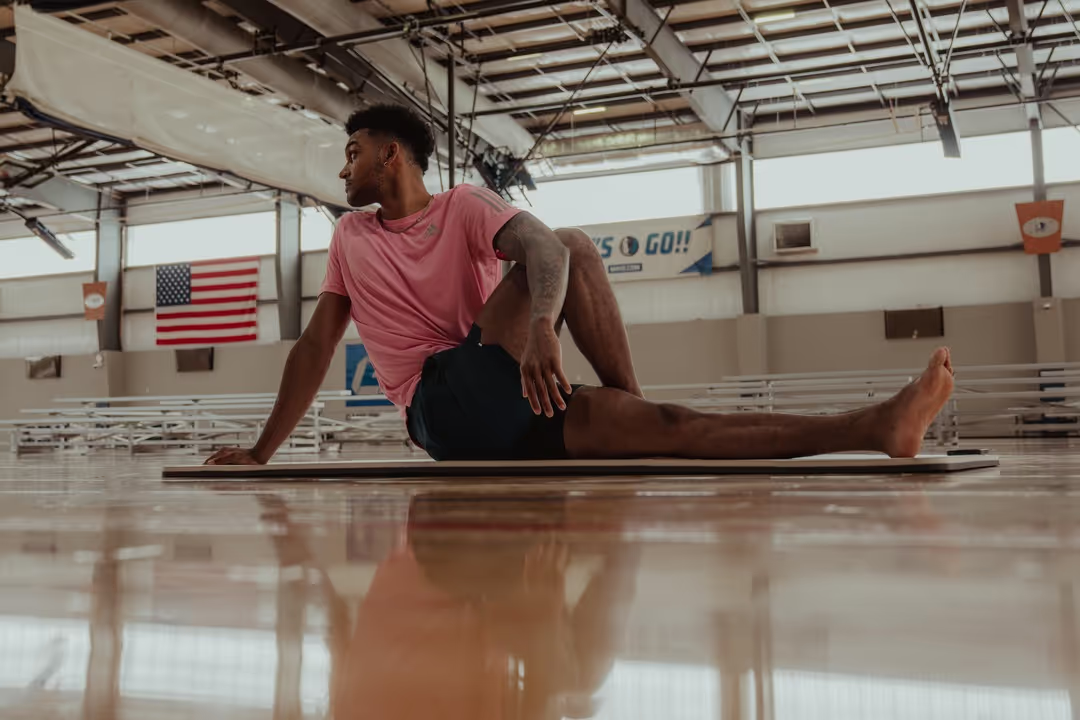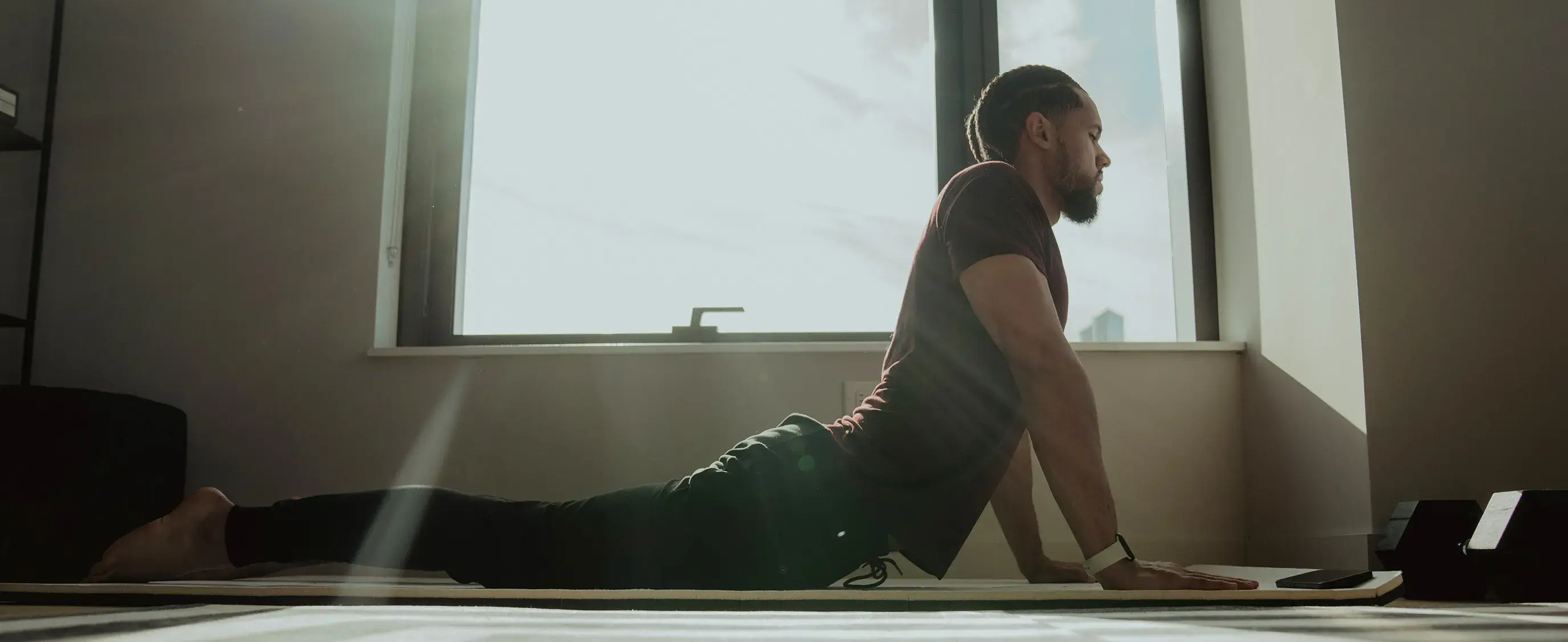Injuries are an unfortunate part of an active lifestyle. Whether you're hitting the gym, running marathons, or just enjoying a casual game of basketball, the risk of injury is always present. Recognizing the early signs of injury can help you recover faster, avoid long-term damage, and continue training without setbacks. If you're wondering how to recover quickly from a workout, understanding these warning signals is the first step. This article will guide you in identifying them, empowering you to take action before a minor issue becomes a significant problem.
To support your journey, Pliability offers a mobility app designed to help you recognize signs of injury early. This tool empowers you to recover faster, avoid long-term damage, and keep training safely without setbacks.
What are Sports Injuries and What Causes Them?

Sports injuries refer to harm that occurs during sports or exercise, affecting the musculoskeletal system, which comprises:
- Muscles
- Tendons
- Ligaments
- Bones
- Other tissues
While often associated with athletes, these injuries can happen to anyone engaged in physical activities. Even non-athletes can experience sports-like injuries from repetitive tasks, such as factory workers developing tennis elbow.
Prevention Strategies for Acute and Chronic Sports Injuries
Sports injuries are divided into two broad categories:
Acute Injuries
These occur suddenly, such as:
- When a person falls
- Receives a blow
- Twists a joint
Examples of acute injuries are:
- Sprains
- Dislocations
Chronic Injuries
In contrast, chronic injuries usually result from overuse of one area of the body (repetitive overload) and develop gradually over time.
Some common chronic injuries are:
- Tennis elbow
- Stress fractures
Rehabilitation and Recovery After a Sports Injury
Treatment for a sports injury depends on the type of injury, but many can be treated at home. The injured part of the body could be treated with R-I-C-E:
- Rested
- Iced
- Compressed
- Elevated
For severe injuries, you will need to see a health care provider, who may recommend a course of physical therapy for rehabilitation and/or:
- A cast
- Splint
- Brace
In some cases, you may need surgery. A rehabilitation program that includes exercise and other types of therapy is usually recommended before resuming the sport or activity that caused the injury.
While adverse events do sometimes happen when playing sports or exercising, most physical activity is safe for almost everyone, and the health and social benefits far outweigh the risks.
Who Gets Sports Injuries?
Anyone can suffer a sports injury, but several factors can increase the risk of sustaining injury.
The risk factors for sports injuries include:
- Not using the correct exercise techniques.
- Overtraining occurs either by:
- Training too often
- Too frequently
- For too long
- Increasing your intensity of physical activity too quickly can lead to injury.
- Playing the same sport year-round.
- Running or jumping on hard surfaces.
- Wearing shoes that do not have enough support.
- Not wearing the proper equipment.
- Having had a prior injury.
- Having certain anatomical features specific to each joint or poor flexibility.
- Taking certain medications, such as fluoroquinolones, a class of antibiotics linked to tendinitis and tendon rupture.
- The type of injury you are most vulnerable to depends on the kind of:
- The activity you participate in
- Your age
- Your sex
Types of Musculoskeletal Injuries
Injuries to the musculoskeletal system that are common in athletes include bone fractures, dislocations, sprains, strains, tendinitis, or bursitis.
These terms are defined below.
Bone Fracture
A fracture is a break in a bone that occurs from either a quick, one-time injury, known as an acute fracture, or from repetitive stress, known as a stress fracture. Growth plate fractures are unique to children who are still growing.
Acute Fractures
A fall, car accident, or collision or direct contact can cause a fracture, and the severity depends on the force that caused the break. The bone may crack, break completely, or break into many pieces.
Injuries that break through the skin to the bone, which are known as open fractures, are severe because there is an increased risk of infection. Most acute fractures require an immediate visit to a health care provider.
Stress Fractures
Stress fractures occur primarily in the weight-bearing bones of the lower extremity.
These include the:
- Femur
- Tibia
- Fibula
- Foot bones
They are common in sports with repetitive impact, primarily involving running or jumping, such as:
- Gymnastics
- Tennis
- Basketball
- Track and field
Running creates forces of two to three times a person’s body weight on the lower limbs.
Growth Plate Fractures
The growth plate is an area of cartilage near the ends of long bones, and it enables the bones to lengthen until children reach their full height. Growth plates are especially vulnerable to injury until they are converted to bone.
Each bone growth plate closes at a different age, typically by or around age 18. Growth plate fractures can result from a single traumatic event, such as:
- A fall
- Car accident
- Chronic stress and overuse
Dislocation
When the two bones that come together to form a joint become completely separated, the joint is described as dislocated. Contact sports like football and basketball, as well as high-impact sports and those involving significant contact, falling, or extreme loads, cause most dislocations.
A dislocated joint typically requires immediate medical treatment, but sometimes the bones move back into place on their own. A dislocation is a painful injury and is most common in the:
- Shoulders
- Elbows
- Fingers
- Kneecap
- Femur-tibia or knee
Sprain
Sprains can range from minimal stretching to partial or complete tears of ligaments, the bands of connective tissue that join the ends of one bone with another to stabilize a joint. Sprains are caused by trauma, such as a fall or blow, that stresses a joint out of position.
Sprains can range from first degree (minimally stretched ligament) to third degree (a complete tear).
Areas of the body most vulnerable to sprains are:
- The ankles
- Knees
- Wrists
Strain
A strain is a twist, pull, or tear of a muscle, muscle-tendon juncture (where muscle and tendon connect), or a tendon itself. A tendon is a cord of tissue connecting muscle to bone. Athletes who play contact sports can get strains, but they can also happen from repeating the same motion repeatedly, as in tennis or golf.
Like sprains, strains can range from a minor stretch to a partial or complete tear of a muscle or tendon. This is most common in muscles or tendons between two joints.
Tendinitis
Tendinitis is inflammation of a tendon, a flexible band of fibrous tissue that connects muscles to bones.
It often affects:
- The shoulder
- Elbow
- Wrist
- Hip
- Knee
- Ankle
A sudden injury can cause tendinitis, but it usually results from carrying out the same motion repeatedly.
These people have a higher risk of tendinitis, such as:
- Carpenters
- Gardeners
- Musicians
- Certain athletes, like:
- Golfers
- Tennis players
Tendons become less flexible as you age, so you are more likely to get tendinitis as you get older.
Bursitis
Bursitis is inflammation of the bursae (plural of “bursa”), small, fluid-filled sacs that act as cushions between a bone and other moving parts, such as:
- Muscles
- Tendons
- Skin
A one-time event, like a blow or fall, can cause bursitis. It can also result from repeating the same motion many times, like throwing a ball, or from prolonged pressure, such as from kneeling on a hard surface or leaning on the elbows.
It usually affects:
- The shoulders
- Elbows
- Hips
- Knees
Common Sports Injuries
Most sports injuries involve one or more of the types of musculoskeletal injuries described above. The joints are particularly susceptible because a person’s body places significant demands on them. Joints must provide both stability and flexibility, and they are complex structures that include several interconnected parts.
Some of the common injuries experienced by athletes and people who have jobs or hobbies that involve repetitive motion include:
Shoulder Injuries
Rotator Cuff Injury
These are common shoulder injuries. The rotator cuff is a group of four muscles and tendons that stabilize the shoulder joint. Rotator cuff injuries happen when the tendons or bursae near the joint become inflamed from overuse or a sudden injury.
They are common in people with jobs that involve overhead motions, like painters, or athletes who repeatedly reach upward, such as tennis players and swimmers.
Impingement
This happens when the top of the shoulder blade puts pressure on the soft tissues beneath it (bursa and rotator cuff) when the arm is lifted. Tendinitis and bursitis can develop, limiting movement and causing pain.
Repeated overhead movements, such as those used by swimmers, increase the risk of impingement.
Instability
Shoulder instability happens when the round end of the upper arm bone (golf ball shaped) is forced out of its shallow socket (shaped like a golf tee), either wholly or partially. Once the labrum (tissue around the socket) and shoulder ligaments become stretched or torn, the shoulder becomes “loose” and dislocations can occur repeatedly.
Elbow Injuries
Tennis Elbow (Lateral Epicondylitis)
When you play tennis or other racket sports, the tendons in the elbow can develop:
- Small tears
- Wear down
- Become inflamed
This is causing pain on the outside of the elbow.
People who have a greater risk of having tennis elbow:
- Painters
- Lumbers
- Carpenters
People who repetitively use their forearms are also at higher risk of getting tennis elbow.
Golfer’s Elbow (Medial Epicondylitis)
This is a form of tendinitis that causes pain in the inner part of the elbow. Pain may spread to the forearm and wrist. Golfers and others who repeatedly use their wrists or clench their fingers can develop carpal tunnel syndrome.
Little League Elbow
This is a repetitive growth plate injury to the elbow caused by youths overloading their growth plate by throwing. It is most common in pitchers, but any young athlete who throws repeatedly can get it. The pain is in the inner part of the elbow.
Ulnar Collateral Ligament Injury
Repeated throwing can cause tears in the ligament on the inner part of the elbow, leading to pain and decreased throwing effectiveness.
Knee Injuries
Runner’s Knee
This condition causes pain or tenderness close to or under the kneecap (patella) at the front of the knee. It is common in runners, but it also affects people who are active in other ways, such as those who hike or cycle.
Fracture
Fractures can happen in any bone around the knee, but the kneecap (patella) is the most common, usually as a result of an event like a bad fall or a blow to the knee.
Dislocation
A significant impact on the knee can cause the kneecap to be forced from the groove in the thigh bone (femur) and pushed out of alignment, leading to a slip out of position.
Torn Ligament
When the knee is overextended or twisted, the ligaments within it can tear. Anterior cruciate ligament (ACL) injuries are prevalent in athletes. They often happen when the person changes direction suddenly or lands from a jump.
Meniscal Tear
Meniscal cartilage serves as a shock absorber in the knee. An awkward twist or pivot can cause a tear. They are commonly torn when the knee suffers a sprain or a complete tear of the knee ligaments.
Tendon Tear
Tendon tears tend to be more common in middle-aged people who play sports that involve running and jumping. They often happen because of a forceful landing and sometimes from an awkward jump.
Leg Injuries
Groin Pull
Quick side-to-side motions can strain the muscles of the inner thighs and lead to a groin pull.
People who play these sports have a higher risk of groin pulls, such as:
- Hockey
- Soccer
- Football
- Baseball
Hamstring Strain
Three muscles run along the back of the thigh and form the hamstrings. Activities that involve a lot of running, jumping, and sudden starts and stops place you at risk of a hamstring strain.
People who play these sports commonly get this injury:
- Basketball
- Football
- Soccer
Shin Splints
Shin splints refer to the pain caused by inflammation of the muscle's attachment along the inside length of the shinbone (tibia), the large bone in the front of the lower leg. The pain is usually on the inner side of the lower leg.
Shin splints are primarily seen in runners, particularly those just starting a running program.
Ankle Injuries
Ankle sprain. You can sprain your ankle when you roll, twist, or turn it awkwardly, stretching or tearing the ligaments in the joint. It can happen when you land awkwardly when jumping or pivoting, when walking on an uneven surface, or when you land on someone else's foot.
People who play sports with a lot of pivoting, such as volleyball and basketball, are at risk of an ankle sprain.
Achilles Tendinitis
An Achilles tendon injury results from a stretch, tear, or irritation to the tendon connecting the calf muscle to the back of the heel.
The Achilles is the largest tendon in the body, and you use it when you:
- Walk
- Run
- Climb stairs
- Jump
- Stand on the tips of your toes
People with Achilles tendinitis usually feel pain and stiffness at the back of the heel, especially in the morning. Achilles tendinitis is usually a chronic condition caused by overuse, but severe cases can lead to a tear that may require surgery.
What Causes Sports Injuries?
The most common causes of sports injuries include:
- Falls, which account for more than 1 in 4 sports injuries, according to the CDC
- Training too hard or too long (overexertion) or overestimating your abilities, which can cause injury
- Direct impact, which includes being hit by sports equipment or running into another player
Risk Factors
Sports injuries are usually accidents, and accidents are often random. But some things can contribute to the risk of an injury.
These risk factors may include:
- Not wearing the right gear or using the proper safety equipment
- Not warming up or stretching properly before activity
- Starting at an intensity level your body isn’t used to
- Playing aggressive contact sports, like tackle football
Related Reading
- Why is a Recovery Period Between Bouts of Exercise Important?
- Hip and Knee Pain
- Why Do the Insides of My Legs Hurt When I Run
- Deadlift Back Pain
- Signs of Overtraining Cycling
- Deloading Week
- How Do You Know if You Tore Your ACL
- Injuries in Weightlifting
- How to Prevent MCL Injuries
12 Major Signs of Injury (Acute and Chronic)

Recognizing Symptoms of Acute Injuries
1. Sudden, Severe Pain
Acute injuries typically present with sudden and severe pain. This pain can be immediate, sharp, and intense, often resulting from a specific impact or trauma. It’s the body’s way of signalling that something is wrong and needs attention.
2. Extreme Swelling or Bruising
Swelling and bruising accompany many acute injuries. They can appear quickly and indicate internal bleeding or damage to tissues and blood vessels. The swelling might limit movement and cause discomfort.
3. Inability to Bear Weight
If you cannot place weight on a leg, knee, ankle, or foot, it could signify:
- A fracture
- Severe sprain
- Other significant damage
This inability may develop immediately or shortly after the injury occurs.
4. Restricted Joint Movement
Not being able to move a joint usually might indicate a serious injury, such as a dislocation or severe sprain. The restricted movement is often accompanied by pain and swelling.
5. Extreme Weakness in a Limb
Feeling extreme weakness in an injured limb can be a sign of a significant injury.
It might be due to:
- Nerve damage
- A fracture
- Severe tissue damage.
6. Visible Deformity
A bone or joint visibly out of place is a clear sign of a severe injury, like a fracture or dislocation. Immediate medical attention is necessary to prevent further damage.
7. Headaches
Headaches that develop days after an injury can be severe and constant. While they might stem from muscular strain, they could also indicate serious issues like concussions or other traumatic brain injuries.
8. Back Pain
Back pain or sciatica pain might appear after an injury and could point to problems like a herniated disc or spinal cord injury. It’s not always immediate and can worsen over time.
9. Numbness
Experiencing numbness or tingling can signal nerve problems. This symptom often results from an injury to the neck or spine, potentially indicating conditions like whiplash.
10. Abdominal Pain or Swelling
Pain or swelling in the abdomen, along with deep bruises, might suggest internal bleeding. This is a medical emergency and requires immediate attention.
Identifying Symptoms of Chronic Injuries
11. Pain During Activity
Chronic injuries often cause pain during activities like exercise or playing sports. This pain might not be severe, but it can affect performance and enjoyment.
12. Swelling and Dull Ache at Rest
Experiencing swelling and a dull ache when resting can indicate a chronic injury. These symptoms often worsen with activity and improve with rest, but they never entirely go away.
Related Reading
- How to Prevent Peroneal Tendonitis
- Why Do My Knees Hurt After Squats
- How to Prevent Arthritis in Hands
- How to Prevent Achilles Tear
- Ankle Sprain Prevention
- How to Prevent Knee Injuries
- Shoulder Impingement Exercises to Avoid
- Ankle Mobility for Runners
- How to Avoid Rotator Cuff Injury
6 Signs Your Sports Injury Needs Urgent Attention

1. Recognizing Severe Pain
Severe pain is a clear signal that something is wrong. While discomfort is a natural response to injury, intense pain that doesn’t subside or worsens demands immediate attention.
This can indicate serious issues like:
- Fractures
- Dislocations
- Torn ligaments
Such injuries need swift medical care to prevent further damage.
2. Understanding Swelling
Swelling often accompanies sports injuries and serves as a warning sign. If swelling persists or gets worse, it could point to a more serious underlying issue, such as a broken bone or damaged ligament.
In such cases, getting medical help as soon as possible is crucial. Ignoring swelling can lead to complications that might require more extensive treatment later on.
3. Limited Range of Motion: A Cause for Concern
Experiencing stiffness or difficulty moving after an injury may suggest a limited range of motion.
This can happen when there’s damage to:
- Muscles
- Ligaments
- Joints
If you notice restricted movement, it’s essential to seek prompt medical evaluation. Delaying treatment can aggravate the problem, leading to longer recovery times.
4. The Importance of Addressing Numbness or Tingling
Numbness or tingling in the injured area should not be ignored. These symptoms might indicate nerve damage. Left untreated, nerve issues can worsen, causing permanent damage. Seeking medical attention is necessary to address potential complications and ensure proper healing.
5. Recognizing Weakness or Instability
Feeling weak or unstable in the injured area can signal serious problems.
This often results from damage to:
- Muscles
- Tendons
- Ligaments
- Bones
Weakness or instability can affect your ability to perform everyday activities and might lead to further injury if not addressed. Medical intervention is essential to determine the extent of the damage and plan appropriate treatment.
6. Inability to Bear Weight: A Warning Sign
If you can’t put weight on the affected area, it’s a red flag that something is seriously wrong. This often suggests a fracture or ligament tear. Continuing to bear weight on the injured area can worsen the damage.
Immediate medical evaluation will ensure proper diagnosis and treatment, helping prevent long-term issues.
Improve Your Flexibility with Our Mobility App Today | Get 7 Days for Free on Any Platform
Pliability offers a fresh take on yoga, tailored for performance-oriented individuals and athletes. Our app features a vast library of high-quality videos designed to:
- Improve flexibility
- Aid recovery
- Reduce pain
- Enhance range of motion
Pliability provides daily-updated custom mobility programs for those interested in optimizing their health and fitness. It also includes a unique body-scanning feature to pinpoint mobility issues.
If you're feeling limited by pain or the ability to move, Pliability aims to complement your existing fitness routine and help you move better. Sign up today to get 7 days absolutely free on iPhone, iPad, Android, or our website. Improve flexibility, aid recovery, reduce pain, and enhance range of motion with our mobility app.
Related Reading
- Glute Activation Exercises
- Eccentric Quadriceps Exercises
- How to Squat Without Knee Pain
- Injury Prevention for Runners
- How to Start Working Out Again After Knee Injury
- Signs of Overtraining Running
- Scapular Mobility Exercises
- SI Joint Mobility Exercises
- Running Injury Prevention Exercises

.jpg)

.jpg)
.jpg)
.jpg)


